Best Exercises For Hair Growth
Now you know what you should do to strengthen those wonderful tresses.
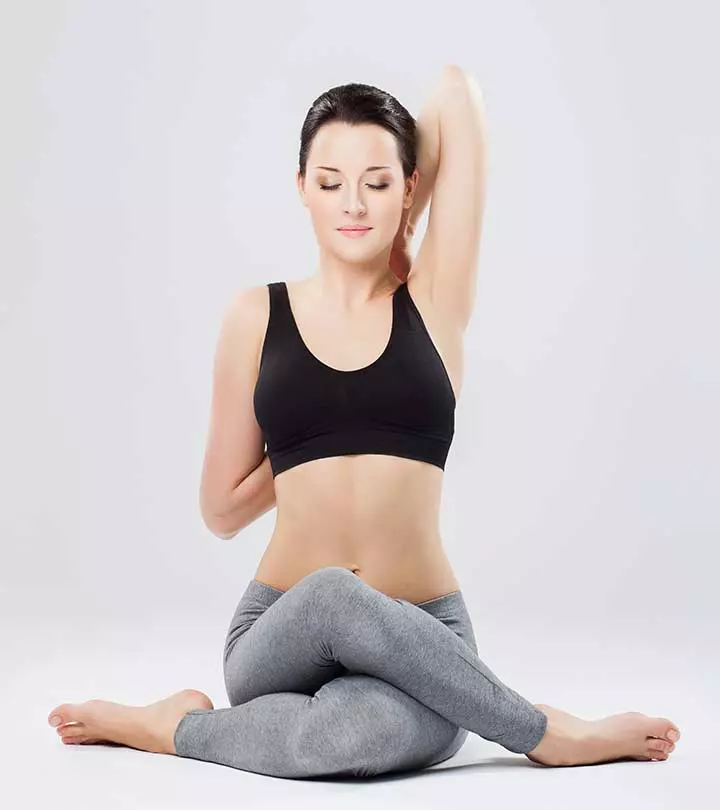
Image: Shutterstock
Exercising regularly promotes physical and mental well-being. But do you know exercises for hair growth also have a similar positive impact on hair health? This special set of exercises offers an array of hair benefits. These exercises help increase the blood flow to the scalp, which helps deliver nutrients and oxygen to the roots and promote hair growth. Moreover, sweating during exercises helps produce natural scalp oils and maintain overall scalp health. Keep reading to know more exercises and yoga poses for hair growth, how they benefit your hair, and more. Scroll down.
In This Article
Benefits Of Exercises For Hair

Exercising regularly not only makes you fit but also promotes healthy hair growth. It helps open up the pores in your scalp and increases blood flow to that area, which brings more nutrients and oxygen to the follicles. Several exercises release natural oils from the scalp and provide nourishment to the hair roots, thereby promoting healthy hair growth.
- Exercising releases endorphins (the happy hormone) that help you relax. Stress is one of the primary reasons for hair loss, and working out helps in reducing stress.
- Working out helps stimulate blood flow to the scalp and enriches the hair follicles with nutrients.
- It stimulates hair growth by increasing the oxygen flow to the scalp.
- Exercising can also decrease the production of cortisol, the main stress hormone. Cortisol can impact collageni An essential protein found in the body in abundance that maintains the quality of hair and improves its growth. production and the skin barrier function.
Now, lets check out the best exercises for hair growth!
Key Takeaways
- Exercising is not only effective for fitness and weight loss but also certain exercises benefit scalp and hair health.
- They improve blood circulation, oxygen flow, and sebum production to help maintain the natural oil and moisture balance of your scalp and hair.
- Neck exercises, yoga asanas, breathing exercises, and regular scalp massage can help keep your scalp healthy and nourished while improving the strength and texture of your hair.
Best Exercises For Hair Growth
Note: Though exercising is said to improve hair growth, it is important to note that there is no scientific evidence to prove the same.
1. Neck Exercises
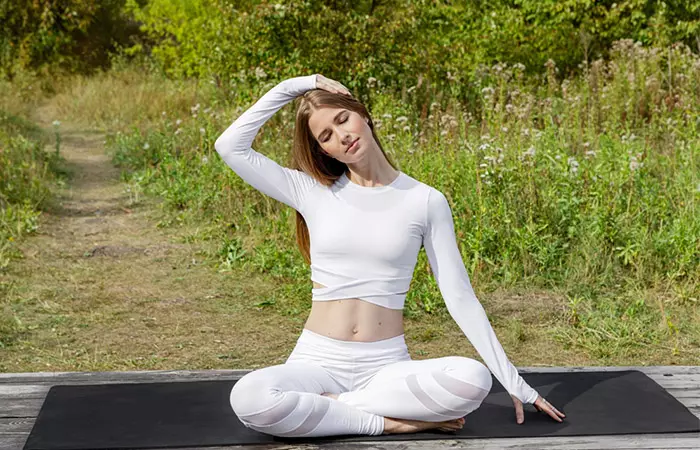
Neck exercises are an effective way for healthy hair growth. Stretching your neck muscles can aid hair growth by releasing the tension and stress in the surrounding muscles. Simply doing side-to-side and front-to-back movements with your head can improve blood circulation which, in turn, boosts hair growth.
Process:
- Stand straight with your hands relaxed on the sides.
- Now, slowly bend your head forward and bring it back, extending it as much as possible.
- Bend your head sideways, stretching on each side for at least 10 seconds.
2. Inversion Method
The inversion method is a popular technique that makes your hair more lustrous by stimulating hair growth with an increase in blood flow.
The greater the oxygen received by the cells in the scalp, the greater the chances of you having healthy locks. This inversion method technique is composed of two parts. First, you need to perform a head massage that helps to stimulate the follicles. Then, hanging upside down to increase the blood flow to the scalp.
Process
- Apply hair oil and massage your scalp by combing through the hair thoroughly.
- Use your fingers to massage your scalp in a circular motion for around 5 minutes.
- Lie down on your bed with your head hanging down and your neck supported by the edge of the bed.
- Remain in this position for 4 minutes.
 Quick Tip
Quick Tip3. Jogging

Cardio exercises, like jogging or aerobics, allow you to sweat out the unnecessary toxins from the body. The sweat that is released during jogging opens the pores on the scalp and helps unclog hair follicles, allowing some room for hair growth. Furthermore, this exercise can help increase blood circulation to the scalp, which then promotes healthy hair growth. Try to start jogging for at least half an hour every day to get healthy hair.
 Quick Tip
Quick Tip4. Breathing Exercises
Breathing exercise (Kapalabhati Pranayama) (also known as shining forehead) involves a series of inhalations and exhalations. It helps in promoting hair growth, preventing hair loss, and delays premature graying of hair. This breathing exercise boosts oxygen to rejuvenate damaged hair and promotes new hair growth.
Process
- Sit in a comfortable position with your back straight.
- Take a deep breath and pull your stomach in as much as possible at the same time.
- Then, exhale.
- Keep the exhalation brief and the inhalation longer.
- Perform this breathing exercise 20 times.
, Certified Yoga Instructor, says, “Anulom Vilomi Yogic breathing practice where the air is inhaled through one nostril and exhaled through another and the process is repeated. is another great breathing practice that is associated with preventing hair loss because it reduces stress and increases blood circulation.”
5. Scalp Massage
Scalp massage is a simple yet inexpensive exercise for hair growth. This exercise improves the blood circulation in the scalp, which is essential for healthy locks (1). Scalp massage aids in hair growth by opening the pores on your scalp to provide the essential nutrients to the hair follicles (2). This effective exercise also reduces stress and offers relaxation, thereby promoting hair growth and thickness. Do this scalp massage once every week or five minutes everyday to stimulate hair growth.
Process
- Pick any nourishing hair oil that is rich in nutrients. Coconut oil and olive oil are some great options.
- Warm up the oil in a microwave for a few seconds.
- Part your hair down the middle.
- Apply the warm oil to your scalp with your fingertips.
- Massage your scalp with your fingers in a circular motion and distribute the oil all over the scalp.
- Gradually increase the intensity of the massage to improve blood flow in the scalp.
6. Head Massage
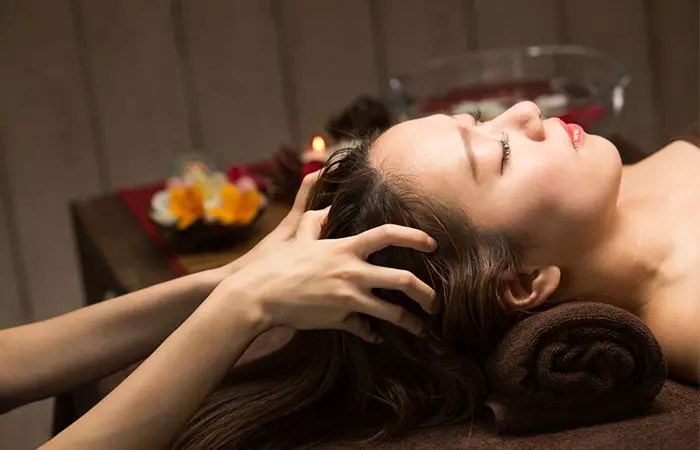
Head massage is an ancient Ayurvedic practice and a powerful home remedy for hair growth. It involves performing rhythmic movements on acupressure points to relieve a number of issues like stress, headaches, graying of hair, and baldness. With your fingertips pointing upward, massage your scalp with slow, circular movements.
“According to yogic wisdom, scalp massage can help to stimulate hair growth. Most medical and hair experts agree that hair growth comes from a healthy diet, good blood circulation, and proper nutrition. As blood flow is sent to the area through scalp massage, circulation is improved, and oxygen and nutrients are sent to the head.” says Steph Ball-Mitchell.
She also adds, “There are 31 marmas in the head and scalp. These are the pressure points where cranial nerves, arteries, and blood veins intersect. The marma points help to drain and relieve pressure in the head and scalp. When they are massaged, blood circulation is increased, and hair growth is facilitated.”
Furthermore, acupuncture is a very interesting way of increasing hair growth. This innovative process works by tapping the pressure points on our fingers. Massaging the base of the neck and the shoulder, either yourself or by getting someone else to do it, has also been shown to help in the regrowth of hair. You can massage your left shoulder with your right hand and vice versa.
Now, it’s time to check out the best yoga poses for hair growth!
Best Yoga Poses For Hair Growth
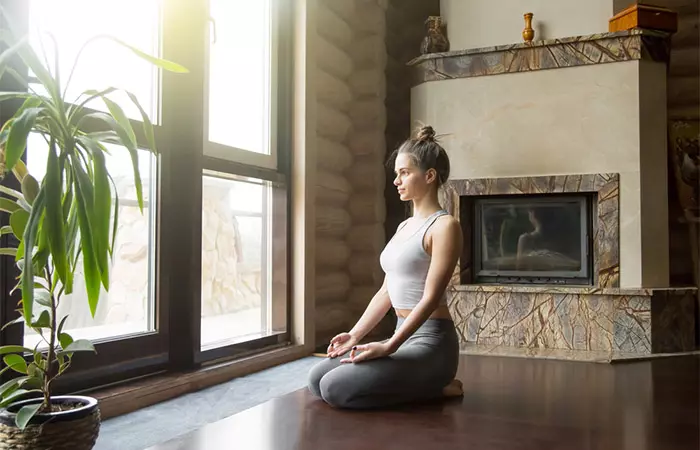
Yoga is excellent for promoting better hair. It not only affects your body but also reduces stress, increases concentration, and leads to better blood circulation in the scalp since it involves inverted poses and backbends. Regular yoga practice is highly beneficial for making your hair lush, improving hair growth, and preventing hair fall.
Yoga poses like Suryanamaskar (Sun salutation) and Tadasana (breath awareness) help to come over hair fall (3).
Yoga asanas like Pavanamuktasana (wild relieving pose), Uttanasana (standing forward fold pose), Vajrasana (diamond pose), Uttanpadasanai This pose is performed lying down on the floor to raise the legs for a stretch that can improve blood circulation. , Sarvangasanai Also called the shoulder stand pose which incorporates a full-body stretch relieving nerve tension and improving blood circulation. , and Balayam Yoga (rubbing nails) are claimed to help in stimulating hair growth.
Steph Ball-Mitchell says, “According to ancient yogic wisdom and also several modern studies, rubbing the nails together can help with hair loss. What happens is that the hair follicles are connected to the nerve endings that are located under the nail beds. As you rub the nail beds together, these nerve endings are stimulated, which, in turn, stimulate hair growth.”
While exercising can help with hair loss prevention and offer hair growth, there are some mistakes that you need to avoid. Check them out in the next section.
Common Mistakes While Doing Exercises
Working out excessively, especially strength training can cause temporary hair loss in both men and women. It can disrupt the hair growth cycle and make your follicles enter the resting phase too early. When your body is subjected to extreme stress due to heavy workouts, it can cause hair fall. According to Steph Ball-Mitchell, Certified Yoga Instructor, “Proper exercise and movement won’t cause hair loss. If a person puts themselves under tremendous stress and pressure related to exercise, the stress can cause hair loss. This is why joyful movement practices like yoga are so important for hair growth.” Excessive exercise also causes you to sweat and salty sweat to build up on your scalp, which can cause faster shedding or other damage to your hair. Also, being inconsistent with your workouts is another common mistake you should think about.
Now, let’s answer a very common question asked by people.
Can Cardio Workouts Make Your Hair Grow?
Exercises should be considered as a part of a holistic beauty and hair care routine. The best exercise for hair growth is said to be cardio as these intense exercises increase the production of sebum, an oily substance that coats the hair strands and prevents your scalp and hair from drying out. Cardio is claimed to affect the production of sebum by getting rid of the toxins from your body. In addition to cardio, adding strength training to your workout routine can also improve blood flow to the scalp. A balanced fitness plan that includes both cardio and strength exercises can be more effective for overall hair health and strength. Also, a healthy lifestyle as well as diet and nutrition, including vitamins, minerals and better body hydration, play a great role in hair growth.
However, no scientific link has been found between cardio exercises and hair growth.
The release of healthy sebum is said to be the best way in which exercise and sweating can contribute to better hair care. This can be obtained by a steam bath in a sauna after an intense workout session. Steam may increase the production of sebum and lead to better and longer hair.
Doing half an hour of cardio two to three times a week could result in healthy hair. One good cardio exercise is the side-to-side hop exercise.
Process:
- Begin by standing straight with a hip-width gap between both feet. Position your arms as if you were jogging.
- Bend your knees slightly and jump sideways, left to right.
- Then, bend back to the right in the same manner.
- Keep jumping left and right alternately for 3 minutes.
In addition to exercising, you can improve your hair growth in other important ways too. Learn more in the next section.
Other Ways To Improve Hair Growth
- Get Regular Trims
Getting frequent trims is vital for long, healthy hair. While trims don’t speed up hair growth, they eliminate split ends that otherwise may cause breakage, dullness, and reduced volume. - Shampoo Less
Reduce how often you shampoo to allow the natural oils to penetrate, hydrate, and repair your hair. Opt for volumizing or thickening shampoos. Regularly use deep conditioners or hair masks for added protection. - Follow A Balanced Diet
Good hair growth starts from within. Consume foods rich in protein, vitamin D, and other essential nutrients to boost healthy hair growth (4).
Infographic: Pre- And Post-Workout Hair Care Tips
A regular exercise routine not only benefits your body but also helps in promoting your hair health. However, for many people, the greasiness and hair damage it brings can be challenging to deal with. But following a few basic tips can help you manage your hair well while you work out. Check out the infographic below to know more! Illustration: StyleCraze Design Team
Exercising can aid in stress reduction and anxiety as well as the maintenance of a healthy physique alongside promoting sleep quality. Because stress is linked to hair loss, exercising daily can help prevent hair loss and promote hair growth. It can also enhance the secretion of natural oils by stimulating blood circulation to the scalp. As a result, begin exercising daily and you may try natural remedies like applying oil on the scalp or specific hair products to promote healthy hair development. However, men and women might experience temporary hair loss due to heavy exercise. It can cause your follicles to enter the resting phase too soon, disrupting the hair development cycle. A half-hour cardio session two to three times each week could result in healthy hair. Try including the exercises for hair growth as discussed in the article, and you will see the results pretty soon.
Frequently Asked Questions
Does sweating help grow hair faster?
Yes. Sweating helps unclog hair follicles and pores on the scalp and remove buildup, which might be stunting new hair growth.
How often should I wash my hair if I exercise every day?
You should not shampoo your hair more than 2-3 times a week or on alternate days. If you find your scalp too greasy or dirty, you can rinse it with water.
Which mudra is best for hair growth?
Prithvi mudra is considered the best for hair growth. It may also prevent graying and hair loss.
Illustration: Exercises For Hair Growth

Image: Stable Diffusion/StyleCraze Design Team
Transform your thin hair to thick and long hair in just 20 days! Learn yoga for hair growth and stop hair fall with this amazing video. Watch it now!
References
Articles on StyleCraze are backed by verified information from peer-reviewed and academic research papers, reputed organizations, research institutions, and medical associations to ensure accuracy and relevance. Read our editorial policy to learn more.
- Effects for Scalp Blood Flow and Properties from Scalp Massage.
https://www.researchgate.net/publication/305293718_Effects_for_Scalp_Blood_Flow_and_Properties_from_Scalp_Massage - Standardized Scalp Massage Results in Increased Hair Thickness by Inducing Stretching Forces to Dermal Papilla Cells in the Subcutaneous Tissue https://www.researchgate.net/publication/295813635_Standardized_Scalp_Massage_Results_in_Increased_Hair_Thickness_by_Inducing_Stretching_Forces_to_Dermal_Papilla_Cells_in_the_Subcutaneous_Tissue
- A Management Model To Promote Hair Growth For Androgenetic Alopecia Cases Through Yoga & Ayurveda
https://www.researchgate.net/publication/330761962_A_MANAGEMENT_MODEL_TO_PROMOTE_HAIR_GROWTH_FOR_ANDROGENETIC_ALOPECIA_CASES_THROUGH_YOGA_AYURVEDA - Diet and hair loss: effects of nutrient deficiency and supplement use
https://www.ncbi.nlm.nih.gov/pmc/articles/PMC5315033/
Read full bio of Madison Dufour
- Steph Ball-Mitchell, E-RYT-500, RPYT, RCYT, is a yoga trainer with over 25 years of experience. As the owner and founder of both Online Yoga School and Yoga & Ayurveda Center, she has trained and certified thousands of teachers internationally over the past decade.
 Steph Ball-Mitchell, E-RYT-500, RPYT, RCYT, is a yoga trainer with over 25 years of experience. As the owner and founder of both Online Yoga School and Yoga & Ayurveda Center, she has trained and certified thousands of teachers internationally over the past decade.
Steph Ball-Mitchell, E-RYT-500, RPYT, RCYT, is a yoga trainer with over 25 years of experience. As the owner and founder of both Online Yoga School and Yoga & Ayurveda Center, she has trained and certified thousands of teachers internationally over the past decade.
Read full bio of Arshiya Syeda
Read full bio of Anjali Sayee
Read full bio of Swathi E






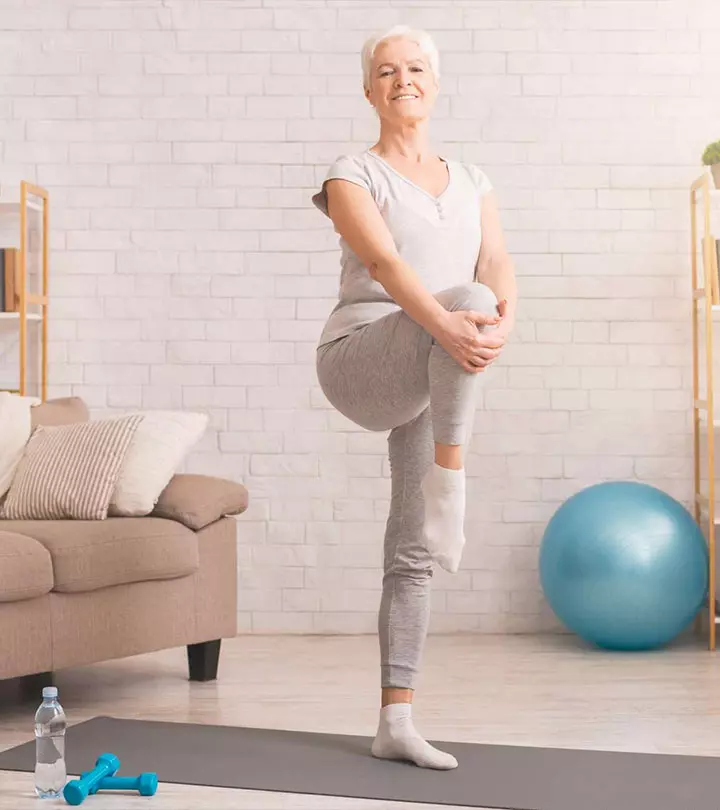
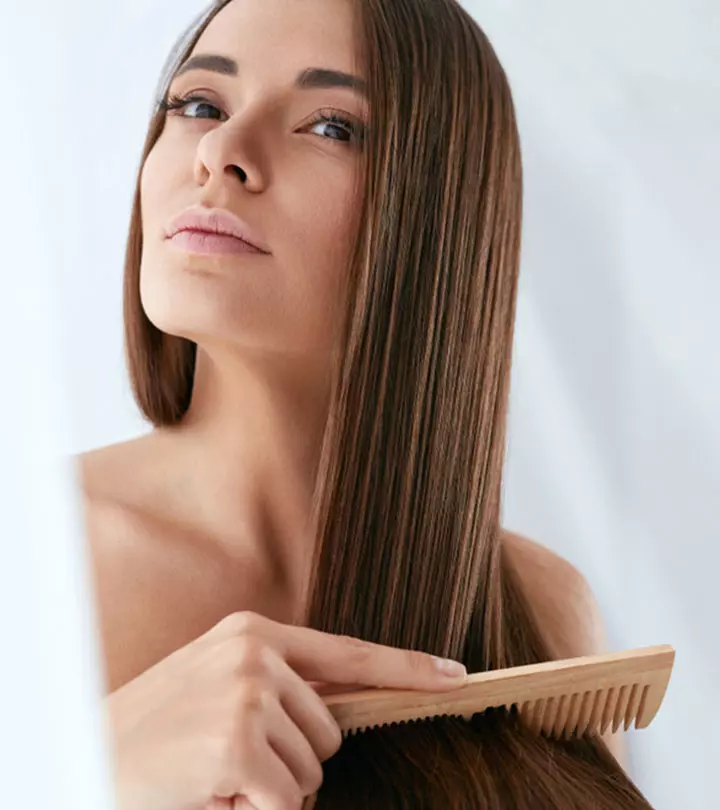
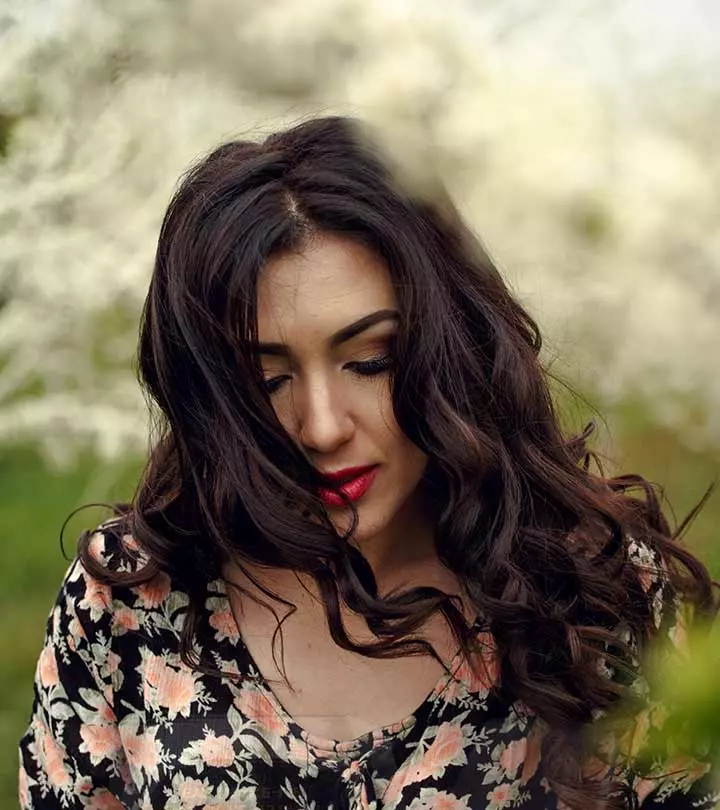
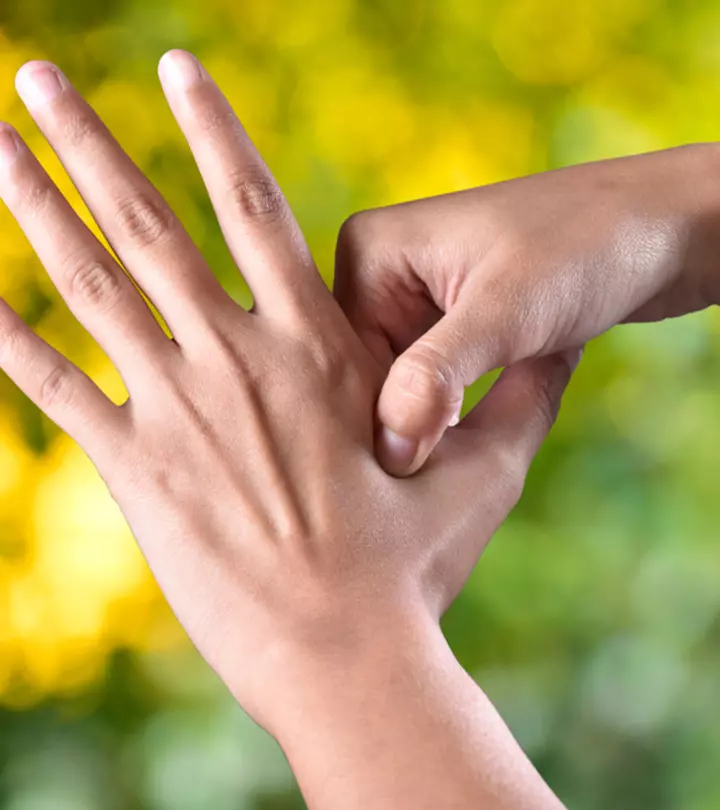
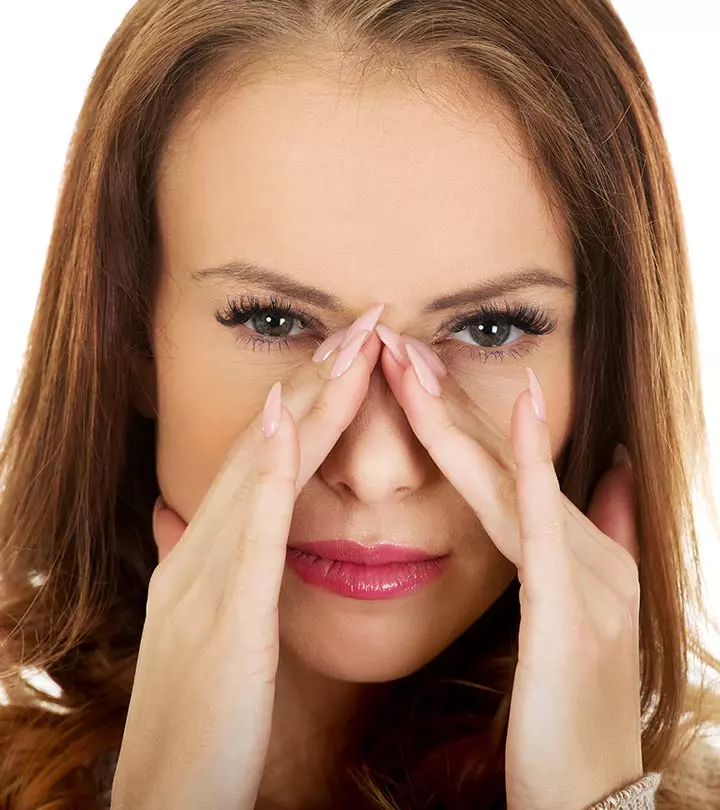
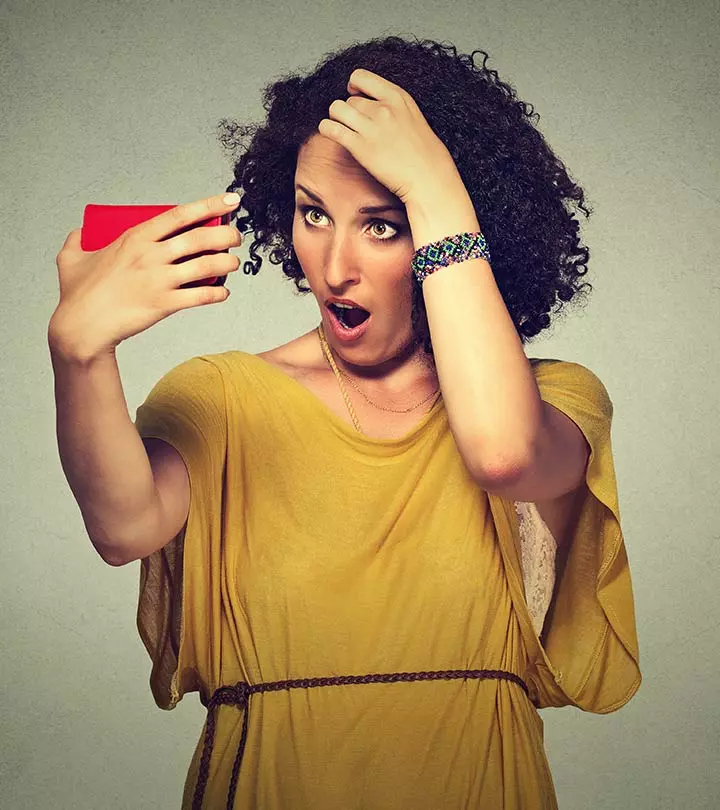



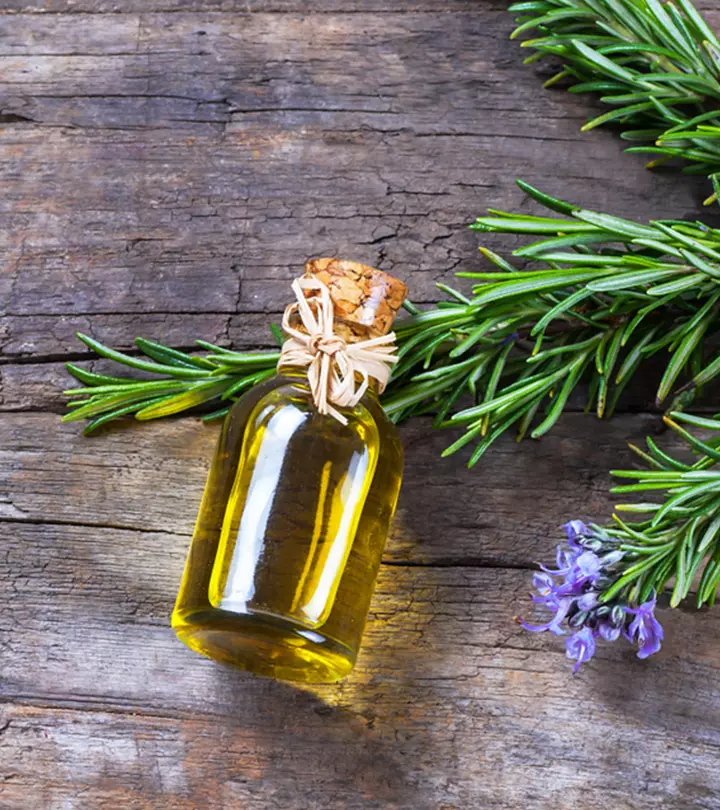
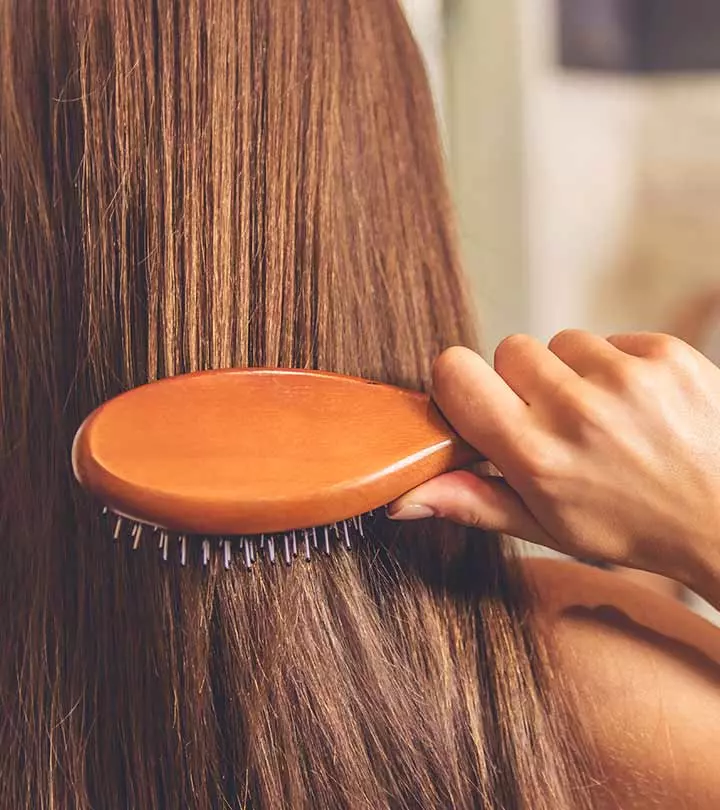
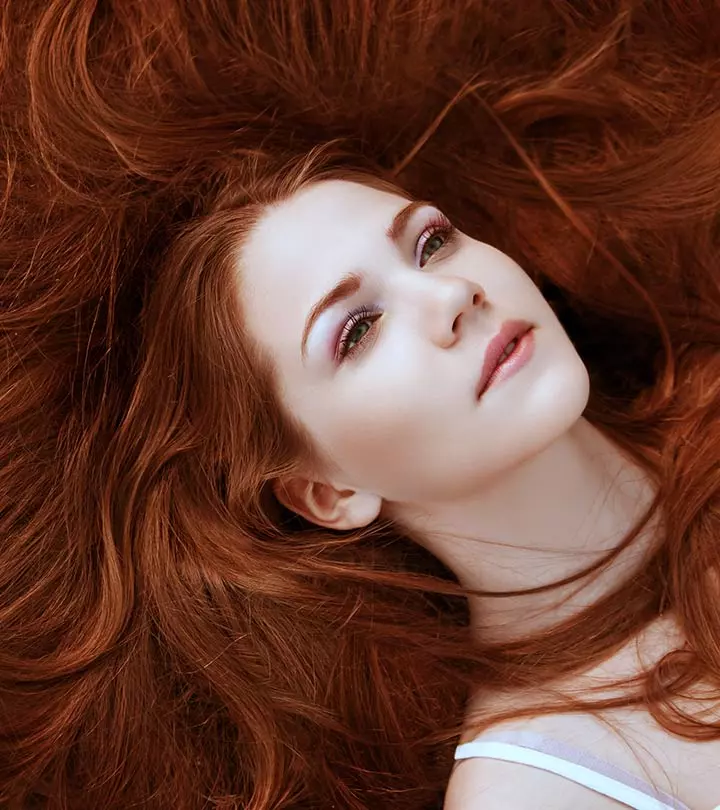
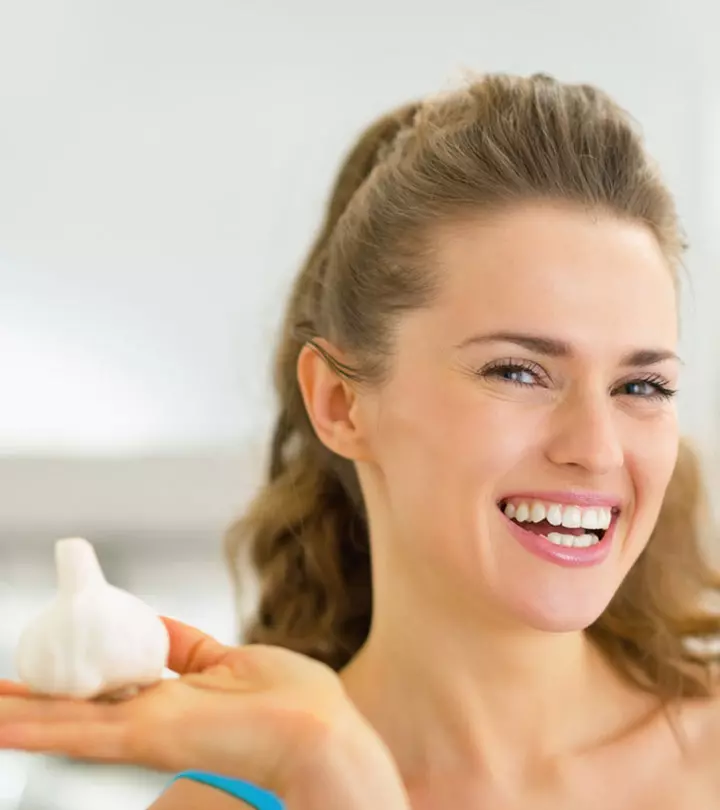
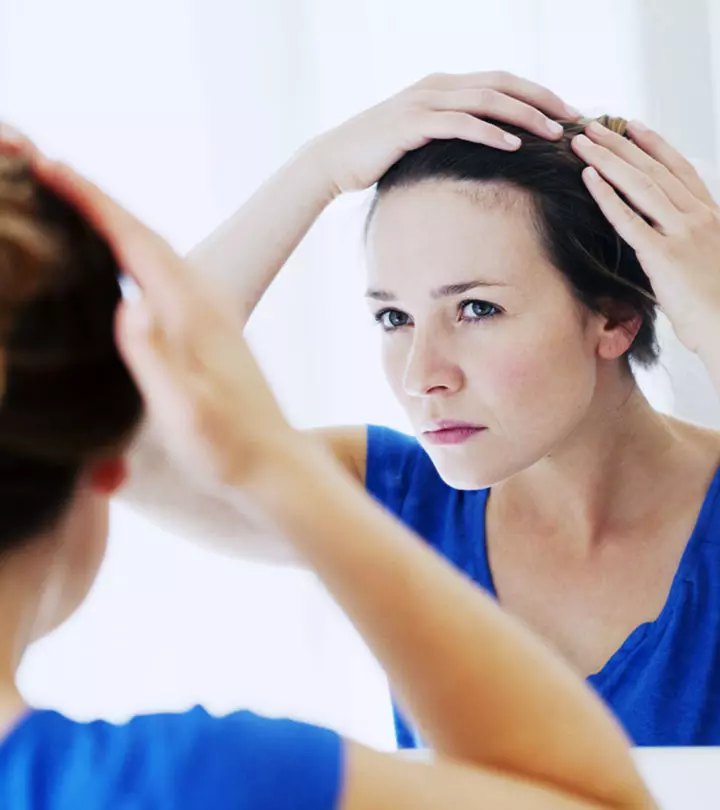

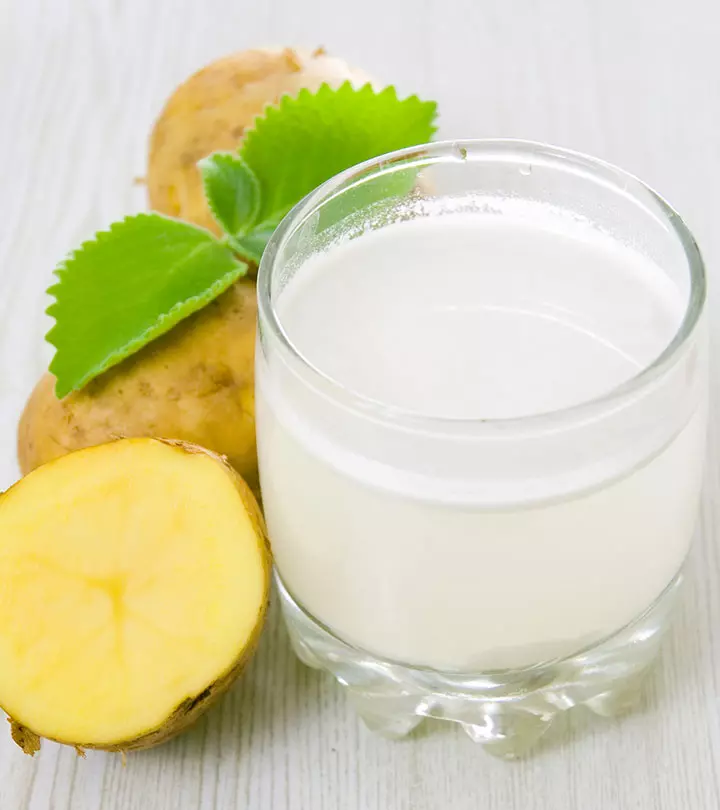

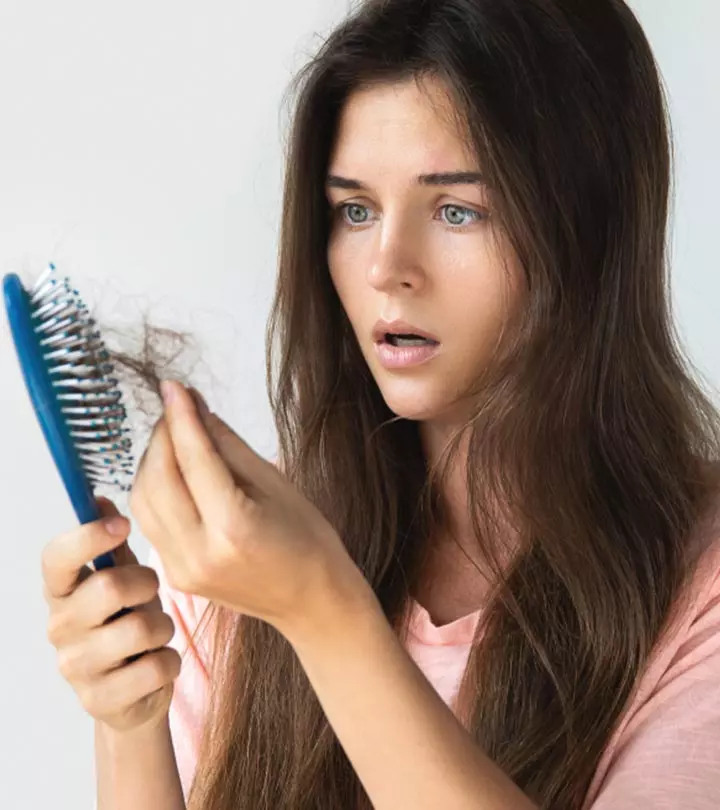

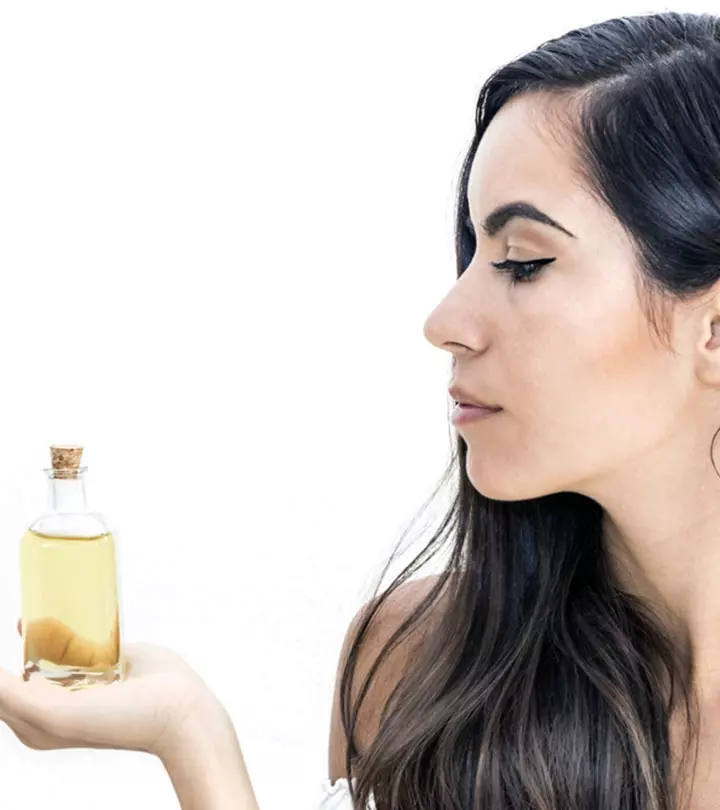
Community Experiences
Join the conversation and become a part of our empowering community! Share your stories, experiences, and insights to connect with other beauty, lifestyle, and health enthusiasts.